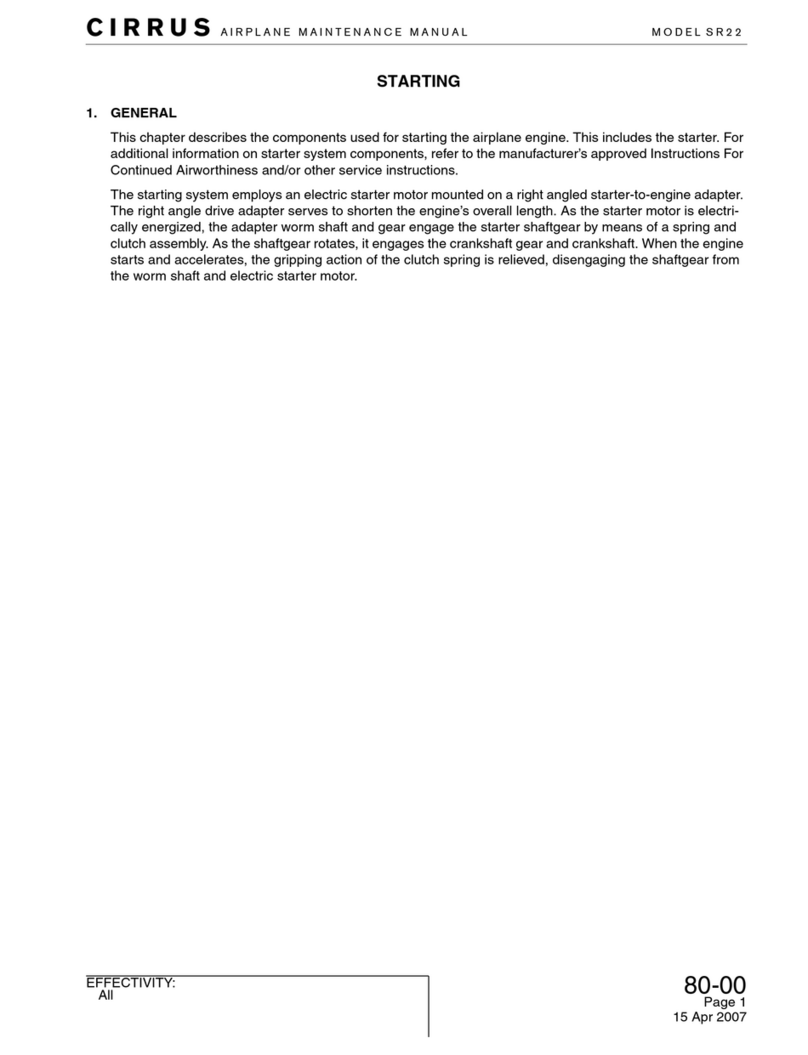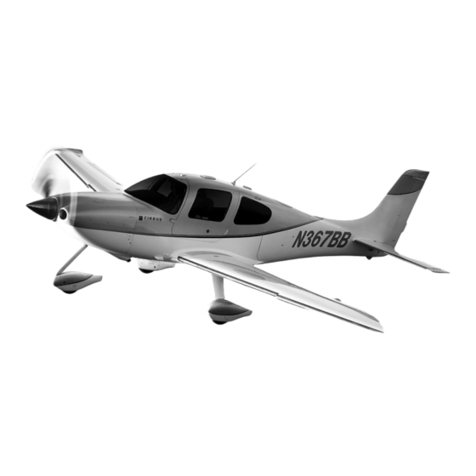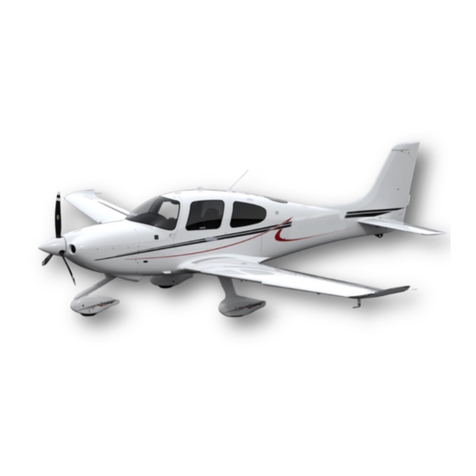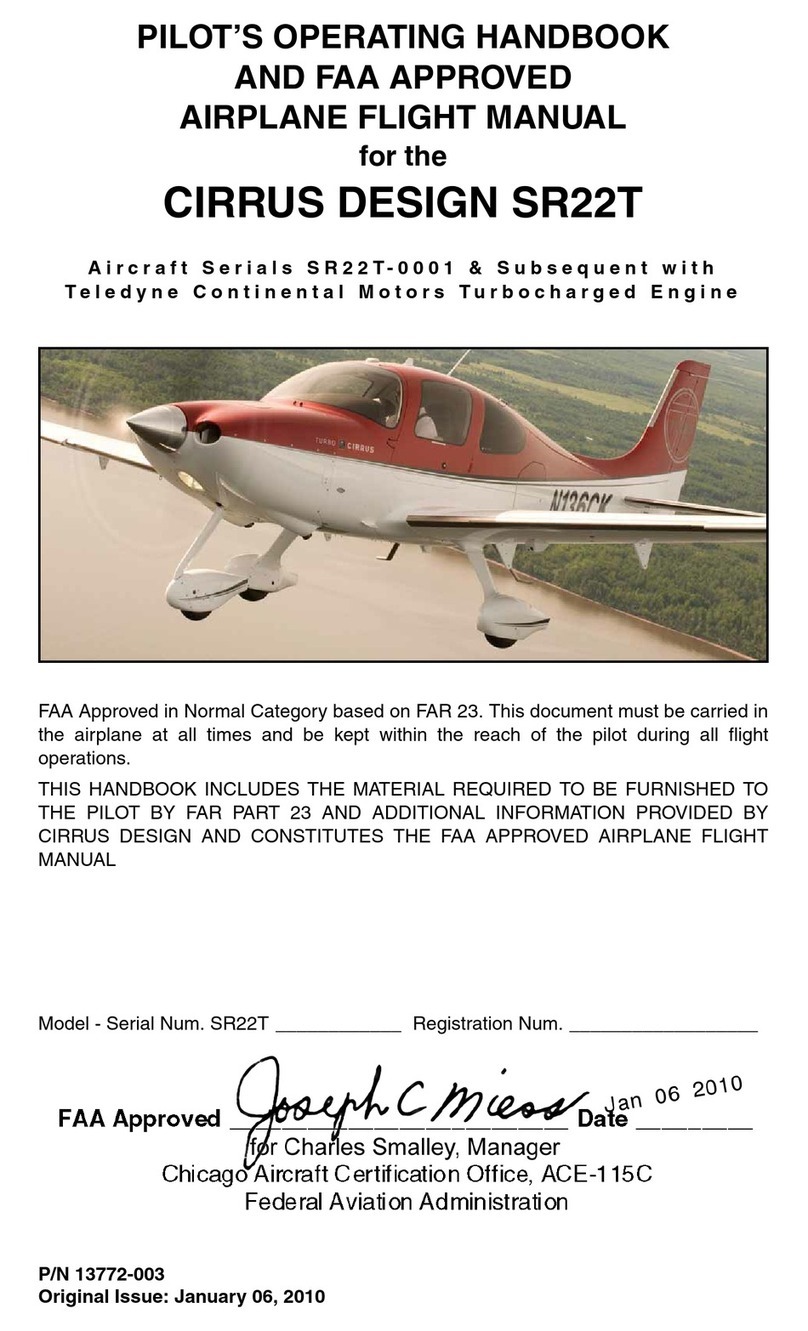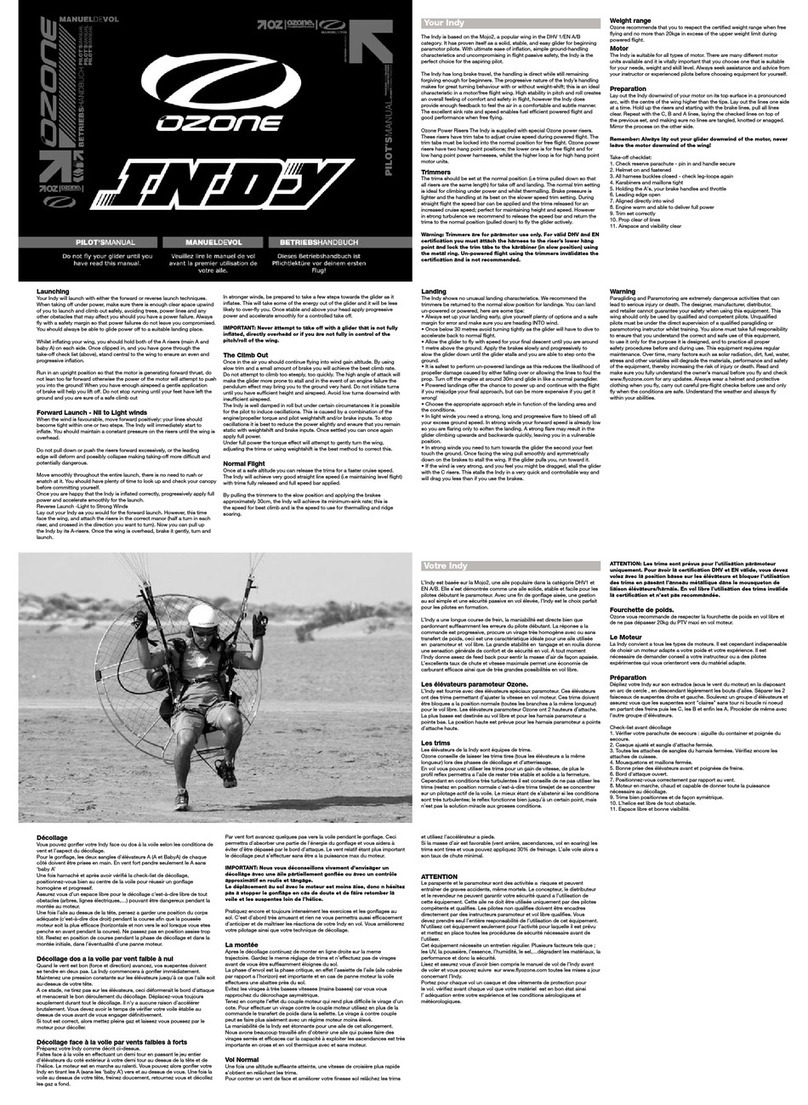
56-20
Page 4 All
EFFECTIVITY:
CIRRUS AIRPLANE MAINTENANCE MANUAL MODELS SR22 AND SR22T
15 Jun 2010
(2) Installation - Aft Passenger Window (See Figure 56-202), (See Figure 56-203)
Window sealant is intended to provide an acceptable seal between the window and fuselage and
to prevent the leakage of air through the airframe structure. Window sealant is used in the instal-
lation of all windows in the aircraft.
Isopropyl alcohol, kerosene, white alptha naptha, mineral spirits, and cotton are acceptable for
cleaning acrylic windows. Residue left behind by the “Spraylat” protective coating may be
removed by soaking the area with isopropyl alcohol and rubbing with an alcohol soaked soft flan-
nel cloth. Residue left behind by the adhesive backed paper covering can also be removed by
the above method. If, however, the paper covering has been stored on the window for an
extended period of time, soak paper with kerosene and keep it wet for several hours. Remove
any remaining adhesive by using a mixture of equal parts of kerosene and isopropyl alcohol.
Soak a soft flannel cloth with this mixture and rub the window with the cloth. The window should
be cleaned after this procedure with a dish washing liquid and plenty of water.
CAUTION: Never use organic solvents such as Methyl Ethylketone (MEK), acetone, or lac-
quer thinner. Do not use jewelry cleaner or paper towels to remove any contami-
nates. Never use ice scrapers on acrylic windows. Do not store any window
outdoors while the protective covering is still on the window. The covering will
become very difficult, if not impossible, to remove without damaging the window.
CAUTION: It is very important to keep the window well supported at all times. Warm tempera-
tures are not required during these operations; however, acrylic will take much
more abuse at 80 degrees than at 30 degrees.
Note: Always inspect the window before final installation. Use care to prevent staining or
scratching the window.
(a) Acquire necessary tools, equipment, and supplies.
Description P/N or Spec. Supplier Purpose
Padded Cargo Rods - Any Source Temporarily secure
window.
Masking Tape 2-inch Any Source Prevent damage to
the window.
Temperature-Resistant
Sealing Compound
MIL-S-8802
Type II, Class B
(Refer to 20-10) Seal windows.
Isopropyl Alcohol TT-I-735 Grade A
or B
Any Source General cleaning.
Cotton Gloves (clean, lint
free)
- Any Source Protect hands.
Cotton Cloth (clean, lint
free)
- Any Source Clean sealing sur-
face.
Application Spatula (non-
nylon)
1-inch Any Source Smooth adhesive.
Primer MC-145 LP Aero Plastics
Rd#1 Box 201-B
Jeannette, PA
15644
Aid in adhesion.


